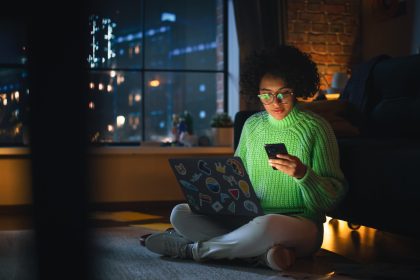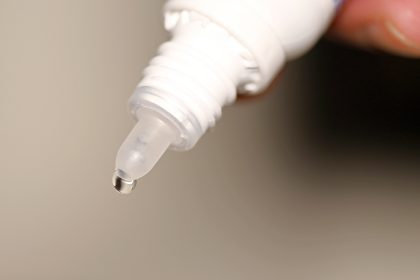Sleepovers are a beloved tradition, especially among children and teenagers. These overnight gatherings are often filled with fun activities, late-night snacks and plenty of bonding time. However, amid the laughter and excitement, there’s an unexpected guest that sometimes makes an appearance: pink eye. Also known as conjunctivitis, pink eye is an inflammation or infection of the transparent membrane that lines your eyelid and covers the white part of your eyeball. While most people associate pink eye with obvious causes like sharing towels or touching contaminated surfaces, sleepovers present some surprising scenarios that can lead to this irritating condition.
Understanding these unexpected reasons can help prevent the spread of pink eye and ensure that your next sleepover is all about fun and not an unwanted trip to the doctor.
The role of close quarters in pink eye transmission
One of the most significant factors contributing to the spread of pink eye during sleepovers is the close proximity in which participants find themselves. Sleepovers typically involve a group of people sharing a confined space, such as a living room or a bedroom. In these settings, personal space is often limited, and the likelihood of physical contact increases.
When someone has an undiagnosed or mild case of pink eye, the bacteria or viruses causing the infection can be easily spread through direct contact. For example, if a person with pink eye rubs their eyes and then touches a shared blanket, pillow or even a doorknob, the next person who comes into contact with that object can inadvertently transfer the pathogens to their own eyes. Additionally, the close quarters make it difficult to avoid respiratory droplets, which can also spread viral conjunctivitis. The result is a higher risk of multiple sleepover attendees waking up with red, itchy eyes the next morning.
Sharing beauty products and accessories: A hidden danger
At sleepovers, it’s common for friends to share personal items like makeup, eye drops or contact lenses. Unfortunately, these practices can be a significant contributor to the spread of pink eye. Makeup products — especially those applied near the eyes, such as mascara, eyeliner and eye shadow — can harbor bacteria and viruses if used by someone with pink eye. When these products are shared, they become a direct pathway for transferring the infection from one person to another.
Similarly, contact lenses and their cases are often swapped between friends, especially in situations where someone forgets their own or wants to try a different color. Contact lenses can easily pick up contaminants, and placing a contaminated lens in your eye can lead to not only pink eye but also more severe eye infections. Even eye drops, which are meant to soothe irritated eyes, can become contaminated if the tip of the bottle touches an infected surface or eye, spreading the infection rather than curing it.
Sleeping arrangements and hygiene habits: A recipe for pink eye
The way sleepovers are structured can also contribute to the spread of pink eye. Many sleepovers involve multiple people sleeping in the same room, often on shared surfaces like mattresses, couches or the floor. When individuals sleep in close proximity, the chance of transferring bacteria and viruses increases. Pillows and blankets that are passed around or used by more than one person can become contaminated with infectious agents, especially if someone has touched their face or eyes and then touched the bedding.
Hygiene habits, or the lack thereof, play a crucial role as well. Sleepovers often lead to late nights and a break from routine, which means participants might skip essential hygiene practices — such as washing their hands or cleaning their faces before bed. This lapse in hygiene increases the risk of spreading pink eye. For instance, if someone rubs their eyes without washing their hands after handling shared items, they can transfer pathogens directly to their eyes.
Allergens and irritants: Unexpected triggers for pink eye
In some cases, the pink eye experienced after a sleepover may not be caused by an infection at all but by allergens or irritants present in the environment. Sleepovers often involve new or unfamiliar environments, such as a friend’s house, which might contain allergens that a person isn’t accustomed to. Common household allergens include pet dander, dust mites, mold and even certain cleaning products. For individuals with sensitive eyes or allergies, exposure to these allergens can lead to a form of pink eye known as allergic conjunctivitis.
Additionally, irritants such as smoke, strong fragrances or chlorinated pool water — if the sleepover includes swimming — can also cause the eyes to become red, itchy and swollen. These non-infectious causes of pink eye are less contagious but can still be uncomfortable and may require medical attention if symptoms persist.
The emotional impact of pink eye: More than just an inconvenience
Waking up with pink eye after a sleepover can be more than just a physical discomfort; it can also have emotional and social consequences, especially for children and teenagers. Pink eye is highly visible — with its telltale redness and swelling — which can make individuals feel self-conscious or embarrassed. For young people, appearance is often closely tied to self-esteem, and having pink eye can lead to feelings of insecurity, particularly in social settings.
Moreover, if the pink eye spreads to multiple attendees of the sleepover, it can create tension and blame among friends. Parents might also become concerned or frustrated, especially if their child frequently attends sleepovers and returns home with pink eye. This emotional aspect highlights the importance of understanding and preventing the spread of pink eye in social situations like sleepovers.
Prevention tips: Keeping your sleepover pink eye-free
Preventing pink eye at sleepovers requires a combination of awareness, good hygiene and responsible behavior. Here are some practical tips to reduce the risk:
- Encourage good hygiene: Remind all participants to wash their hands frequently, especially before touching their face or eyes. Providing hand sanitizer in common areas can also be helpful.
- Avoid sharing personal items: Discourage the sharing of makeup, eye drops, contact lenses and other personal items that come into contact with the eyes. If someone forgets their items, it’s better to go without than to share and risk spreading infection.
- Maintain clean sleeping areas: Ensure that all bedding, pillows and blankets are clean and, if possible, provide separate sleeping spaces for each participant. Encourage guests to bring their own pillows and blankets to minimize the sharing of these items.
- Be mindful of allergens and irritants: If the sleepover takes place in a home with pets or potential allergens, consider vacuuming and dusting before guests arrive. Avoid using strong fragrances or harsh cleaning products that could irritate sensitive eyes.
- Educate about the signs of pink eye: Make sure everyone is aware of the symptoms of pink eye and knows to report any eye discomfort immediately. Early detection can prevent the spread of the infection.
Enjoy the fun, avoid the pink eye
Sleepovers are a time for bonding, laughter and making memories, but they don’t have to come with the added “gift” of pink eye. By understanding the unexpected reasons people might get pink eye from sleepovers and taking steps to prevent it, you can ensure that everyone goes home with great stories and clear, healthy eyes. Remember, a little awareness and a few simple precautions can make all the difference in keeping your sleepover fun and infection-free. So, plan that next sleepover with confidence, knowing you’ve taken steps to protect your friends and yourself from the surprise of pink eye.
This story was created using AI technology.













